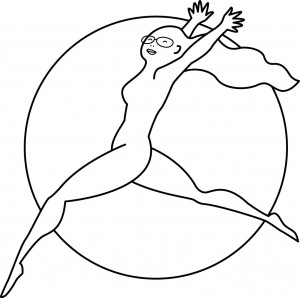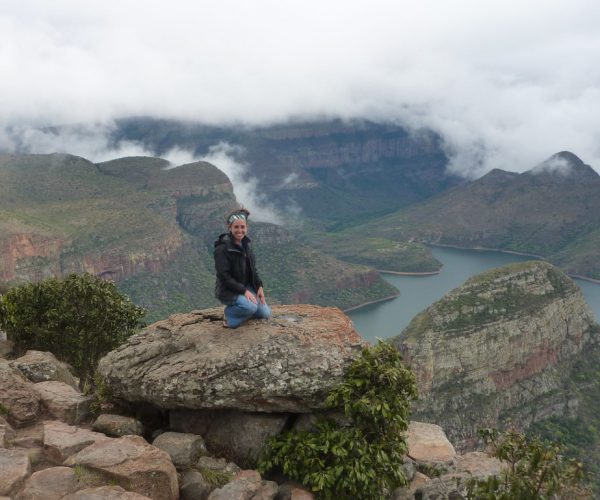Merriam-Webster’s definition of fear is “to be afraid, or apprehensive.” At one time or another, we’ve all experienced some sort of fear. Perhaps you were a little nervous the first time you spoke in public. Perhaps you felt anxiety the minute the doctor revealed the result of the pregnancy test. Whether it was your first time on a balance beam, your first driving lesson, or anything that spiked your level of discomfort in a way that turned towards fright, we’ve each had moments of fearful paralysis that left us with a very particular choice. Do we let the fear overtake us or do we do our best to conquer our fear demons and find our way to the other side?
Sometimes we need a push or assistance in finding tools that allow the fear inside but limit the accompanying paralysis. More often than not, the fear keeps us from living the fullest life we dream. Rarely are terms of positive brilliance associated with fear. When fearful, we banter words such as debilitating, stuck, repetitive, and intrusive, and no matter the interpretation, they don’t conjure positivity (and especially not the delight of sparkly unicorns carrying cookies while creating rainbows with their farts). If we want freedom from fear, we have to work for it.
Dr. Zoë Williams has heard what we’re saying and she knows the way out. The New York clinical psychologist works with adults and adolescents dealing with anxiety, depression, self-esteem, and relationship issues. Her work in Cognitive-Behavior Therapy (CBT) focuses on identifying patterns beneath problems; targeting distorted thoughts, behaviors, and fears; and teaching techniques that facilitate new thoughts and behaviors leading to positive change in her patients’ lives.
Check out her thoughts and let us know your experiences. We’re in this together. See you in two weeks.
SCT: What are some of the fears your patients often share?
ZW: My patients often struggle with a pattern of frustrating self-sabotage. These are mechanisms we use for fear avoidance. Once patients are able to recognize these avoidance patterns, we develop strategies for working through them.
SAMPLE STRUGGLE
A patient who has a fear of traveling to a country where she doesn’t speak the language may feel a pull to take a class to learn some basics of the language first. This allows the patient to put off facing her fear in a justifiable way.
PLAN OF ACTION
- Together we might first make the observation that traveling without knowledge of the language can be done. People have done it and survived! You don’t have to know yet how you will do it, just that it can be done.
- Then we generate coping statements to use as tools, such as “solutions will present themselves along the way,” or “I am capable of solving problems.”
- We might also identify her specific fears. Articulating one’s fears helps to put them into perspective. Often after divulging these fears, patients realize the fears aren’t that scary after all and if and when those fears do arrive, she has clear strategies to conquer them.
SCT: For those who struggle with indecision, anxiety, and fears-what holds them back and what are some techniques that might help them to move forward?
ZW: Fear is uncomfortable. It is the most common reason people struggle with making decisions, pursuing goals, and trying new things.
- REALIZE that it is imperative to acknowledge that anything new or unknown comes with a dose of fear—avoiding fear is impossible. That fear is the price of admission for living fully! The key is to become willing to tolerate that discomfort. Waiting for fearlessness will mean waiting forever.
- EXAMINE the specific uncomfortable factors of your fear and consider whether you can actually tolerate that discomfort. Ask yourself, “could it be ok? Might it pass? Might it not be as bad as I think?” What would be some tools for coping with the discomfort while you’re feeling it? Entertaining these possibilities frees us from fearing fear.

SCT: What are some actionable steps women can take to lessen fear and add more joy into their lives?
ZW: Adding joy to life is a matter of deliberate action! We often get lost in a routine and believe we don’t have any extra time. The truth is that we make time for what we want, and adding joy can take only a few minutes each day. A list, such as this one, http://uwaims.org/files/behavioral-activation/pleasantactivitieslist.pdf, can be a helpful tool.
- Identify items on the list you might want to experience. It could be something you’ve always wanted to try or something you’ve done a million times. Both the time frame and whether it involves others are irrelevant. Set yourself up for success by choosing affordable, accessible, and appealing activities.
- Make a plan. If we don’t plan, we don’t do! Making a plan might involve coordinating with others, buying tickets ahead of time, obtaining supplies, or making a reservation. It could also include making a plan with yourself. Put YOU on the calendar! Whether it’s a bubble bath, stay-in movie night, afternoon stroll, or day at the beach, honor plans with yourself the way you would honor those with another person.
- Execute the plan. Identify stages or actions you may take to self-sabotage. If you’re prone to “I’m too tired, I’ll do it another time,” be aware that this is will come up. When it does, be prepared not to give in.
How can we get technology involved in our plan to choose love and life over fear?
- Utilize apps and access of smart phone/tablets to help move forward towards your goals
- Search for goal-setting/mood-tracking apps and see which is most useful for you
- Set reminders, make lists and track your own change-making behavior

What are five suggestions to help readers take their first steps?
- Accept that you will feel fear.
- Know that you can tolerate it.
- Identify the rewards in taking steps toward goals.
- Praise yourself for each step made.
- Learn from your experiences that you can feel the fear and do it anyway!
“So often times it happens that we live our lives in chains and never even
know we have the key”
—The Eagles


Leave a Reply